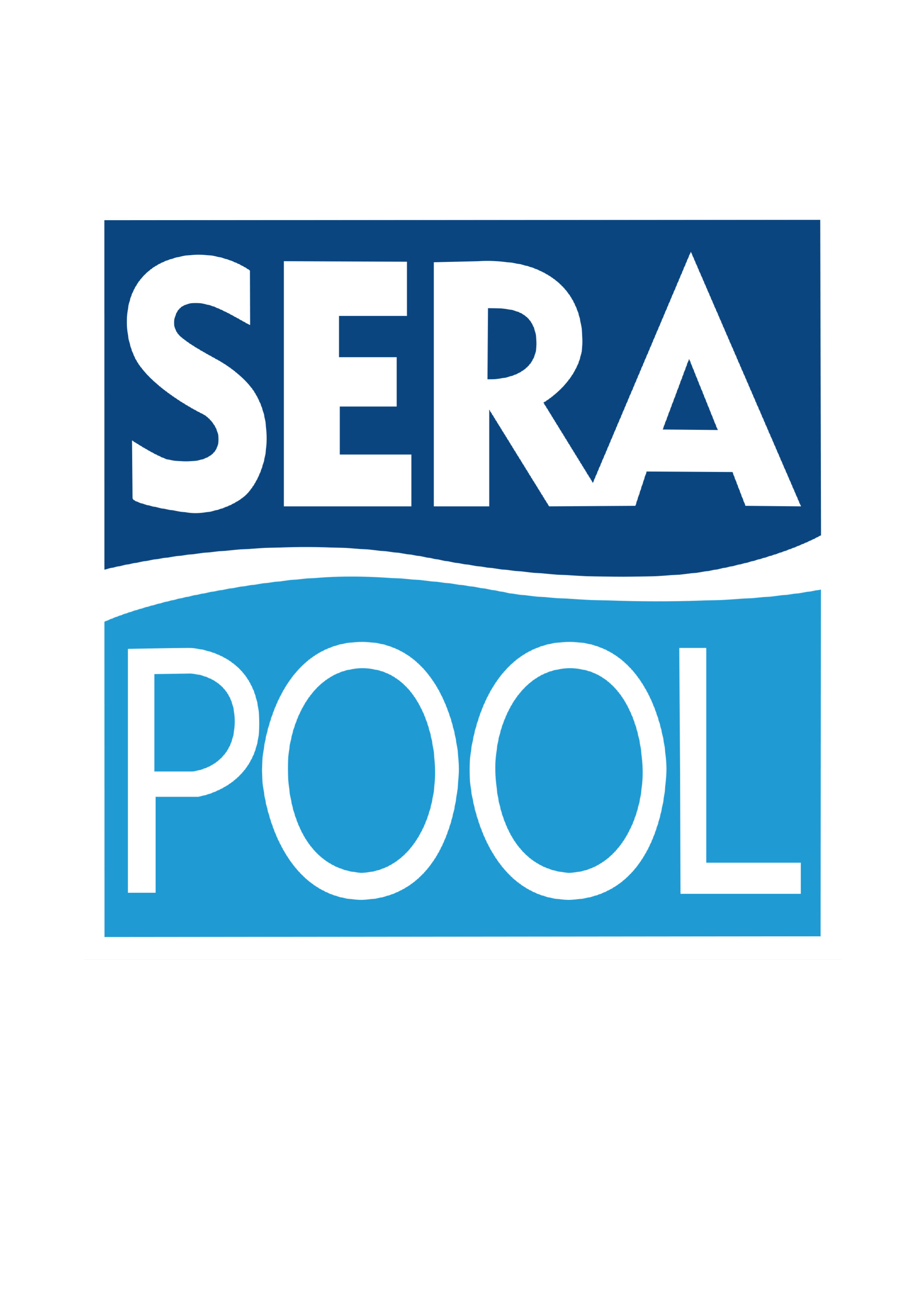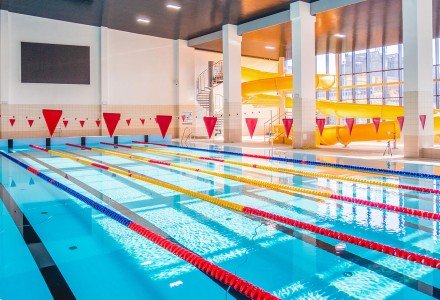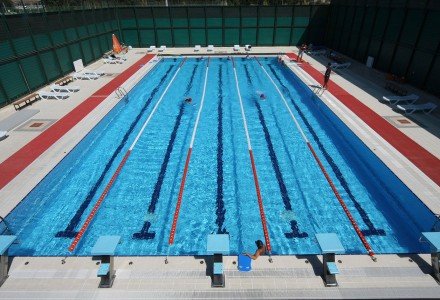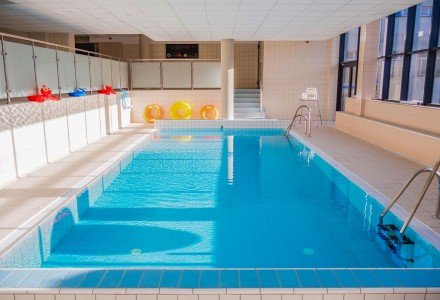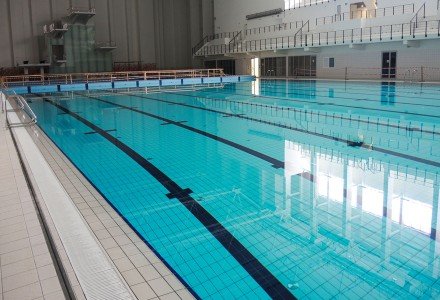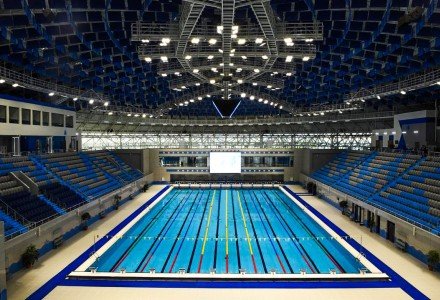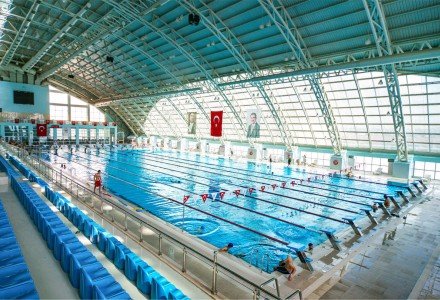Olympic Pools
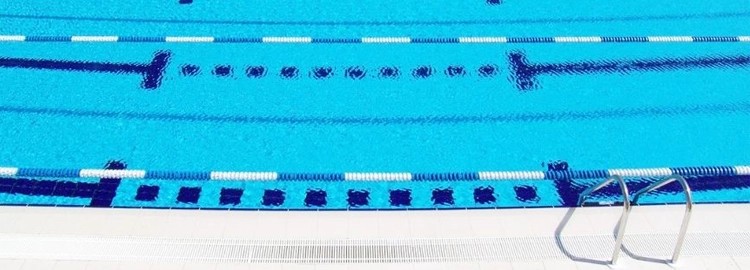
Although Olympic pools are designed and built for sports purposes, in these pools; artistic swimming and water polo competitions can also be held. Olympic swimming pools; These are the pools with Olympic accessories, built in accordance with the “FINA” norms, in order to hold the Olympic, national and international competitions. It is mostly built from reinforced concrete, and in recent years, it is also built as prefabricated.
In these pools; filtration and disinfection installation should be made in accordance with TS13661 and UHE-1 norms. Pool dimensions, number of lanes and tolerances must comply with FINA norms.
Olympic accessories must comply with FINA norms and must also be FINA approved. National, world championships and Olympic competitions are not allowed to be held in pools whose dimensions do not comply with FINA norms. Compliance with FINA norms of olympic swimming pools whose construction has been started is checked and reported at every stage.
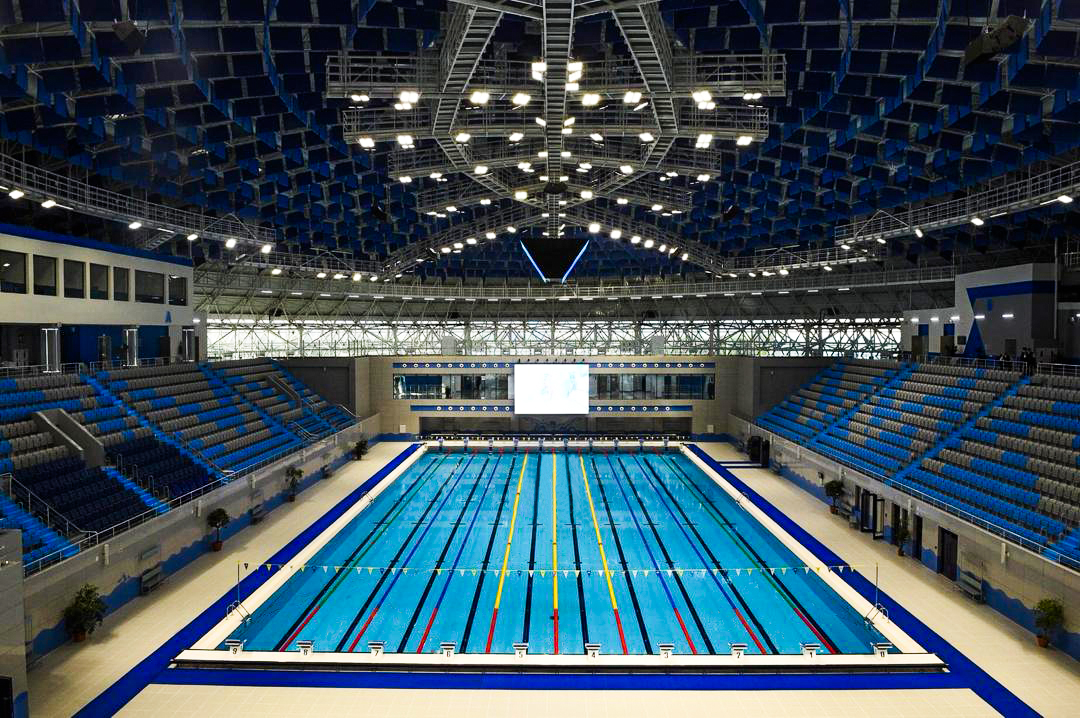
Although the depth of the pool is at least 2.00 meters according to FINA norms, it is recommended to make 3.00 meters in 25.00X50.00 meter pools for multi-purpose use. 3.00 meters is recommended. (To be used also for water polo, water ballet, artistic swimming purposes) Tolerance on the length of the pool, when touch panels are attached; For 25.00 meter and 50.00 meter pools; It should be in the range of 50.020 -50.030, 25.020-25.030 meters.
The width should be 25 meters when the pools have 8 lanes, and 26 meters when they have 10 lanes. The width between the lanes is 2.5 meters. The lanes are separated by separators. The separators must have a breakwater feature that can absorb the waves created by the swimmers. Otherwise, the wave created by a swimmer adversely affects the swimming speed of the swimmer in the other lane. Freestyle, breaststroke, backstroke, synchronized swimming, relay, water polo, water polo, water ballet, artistic swimming competitions can be held in Olympic swimming pools.
In Olympic pools, jumping platforms (stepping stones) are manufactured on two short sides of the pools, in a stainless steel polyester mixture of 40 cm and 70 cm. 70 cm stepping stones are not used in international, Olympic competitions. In international and Olympic competitions, the 40 cm stepping stone is mounted on the headwall placed on both short sides. During the construction of the During the construction of the Olympic bowl, a landing pier with a width of at least 10 cm should be built 120 cm below the water top.
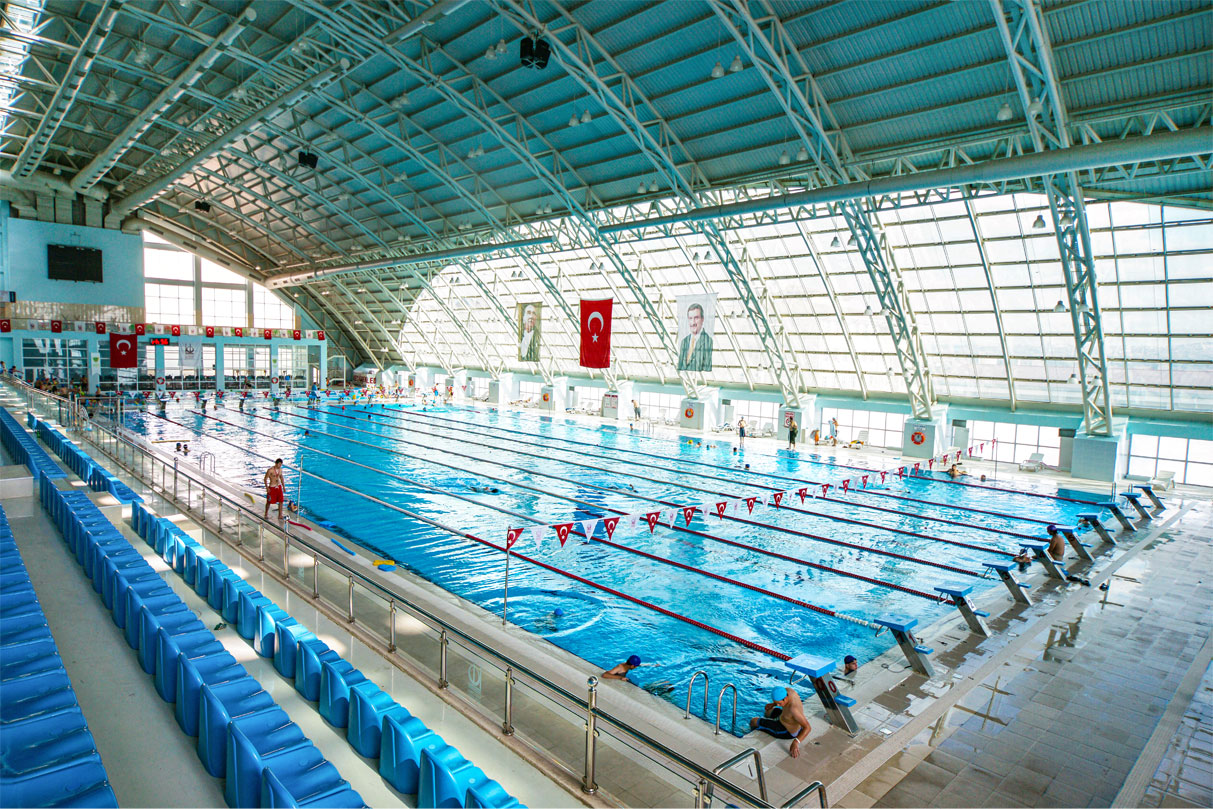
Short course competitions are also held in Olympic swimming pools according to FINA norms. Short course competitions are held separately from other competition times as world and Olympic events. The pools where the short course competitions are held are 25.00x25.00 meters in size. Although separate facilities are built for such competitions, the pool dimensions can be designed as 26x52 meters or 26x51.5 meters to allow short lane competitions while new investments are made.
In these pools, platforms made of movable steel construction, which are driven by manual or electric motor and on which jumping platforms are mounted, are used throughout the pool called Bulkhead with a width of 1.50 meters or 2.00 meters.
According to FINA norms, in the pools where competitions such as the Olympic and world championships will be held, on the short sides of the pool; It is obligatory to use a stainless steel headwall with a width of 100 meters, a height of 0.30 meters, on which stepping stones of 40 cm are mounted, and separator connections are made. The headwall is manufactured as 1.00x2.50x0,30 meters modular and is mounted on the two short sides of the pool so that it can be fixed or disassembled. For competitions, headwalls and other Olympic accessories are used for competitions in old pools made with classical olympic accessories.
The dimensions of the pool engine room should be determined by taking into account the operating conditions, in which all equipment can easily fit. In the engine room, ventilation ducts should be built separately from the central system, which can throw the polluted air directly out.
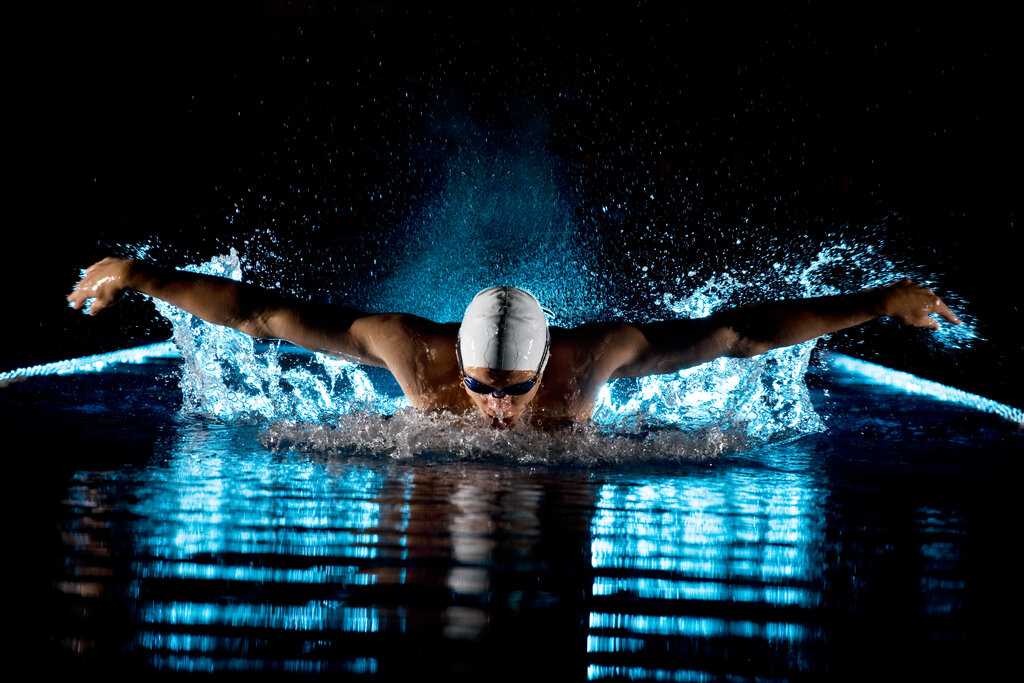
While designing Olympic-sized swimming pools and auxiliary spaces, pool chemicals and disinfectant areas; For ease of storage, transportation and safety, it should be taken into account that it is suitable for vehicle approach and can be accessed without stairs, and its ventilation should be done with separate ventilation channels independent of the central system. In addition, to ensure the safety and other needs of the pool operator; shower, toilet and sink construction should not be forgotten.
When we look at the history of sports, swimming was seen as a part of basic training along with military training in Ancient Roman and Greek Civilizations. In Japan, the emperor made swimming training compulsory in schools with the edict he issued. The first outdoor pool was built in Liverpool in 1828, and the first international competition was held in London in 1837. Styles and water sports in international competitions have changed over the years and have taken their current form. Currently, the finalized FINA regulations apply for 2021-2025.
Another type for sports purposes is jumping pools. Jumping pools can generally be built in the same place as Olympic-purpose pools, indoor or outdoor, or in a 25.00x50.00 meter pool. Jumping pools filtration system design and construction is done in accordance with TSE standards and FINA norms mentioned above. The dimensions of the pool must be in accordance with the dimensions of 25.00x20.00x6.00 meters. As an accessory; There are 2 springboards of 2.0 meters, 2 of 3.0 meters of springboards, and construction type jumping towers of 5.0, 7.5, 10.0 meters.
In jumping pools: Compressed air must be installed to prevent the swimmer from being harmed during training and competitions. In addition, in order to determine the place where the jumper will jump during the competition, the fountain and its installation that continuously delivers water to that point must be connected. In order to prevent the swimmers from slipping around the trampolines, they should be covered with a non-slip PVC-based material of at least 8 mm thickness and there should be a jacuzzi for the swimmers. While the pool is being designed, there should be construction-type ladders on the diving boards and a 5.00-meter stainless ladder on one of the other sides.
Filtration, disinfection equipment used in swimming pools, olympic pool accessories are resistant to corrosion; It should be made of polyester, fiberglass, PVC, stainless steel materials in accordance with the relevant standards. Indoor and outdoor olympic swimming pools should be planned by taking into consideration the technical and swimming needs of the swimming pools during the design phase, and expert engineers and architects from all disciplines should be present during the project design process. Reservations should be left for filtration and electrical installations, especially when the bowl is being built. Before starting the construction of the pool, the investor company must choose the expert pool company for which the filtration installation will be made.
We see that pools for sports, recreation, entertainment, swimming and health purposes are very common in the USA, Russia and European countries. In these countries, pool investments are made on a planned basis, taking into account the resident population and the number of licensed swimmers.
Indoor Olympic swimming pools for sports purposes in our country are built by the Ministry of Youth and Sports and are available in almost every province. The management of the pools is carried out by the Provincial Directorates of Sports, but many of these pools are also opened to the public, apart from licensed and amateur athletes, due to insufficient funds and high operating costs.
Noting that it is necessary to give priority to licensed and amateur athletes in the use of pools, if primary and high school students can be benefited by good planning, both swimming athletes resources will be encouraged and it will be beneficial for public health.
The tender file of the new Olympic swimming pools to be built is prepared and tendered by the Ministry of Youth and Sports. However, the projects in the tender file are not prepared in accordance with the standards and purpose, and material and equipment discoveries are not suitable for the projects. Approximate costs cannot be determined in the tender file. As a result of the tender, the contractor who took the job and the administration and control organization confront each other to solve the problem and turn to non-technical forcing solutions.
Considering that the cost of indoor olympic swimming pools varies between 25 and 100 million depending on the capacity, it is important to design, implement, audit, approximate cost in accordance with the standards, and to have healthy and reliable facilities for the country's economy.
NOTE: For more detailed information about Olympic pools, you can use the FINA FACILITIES RULES 2021-2025 information page on the www.fina.org website.
